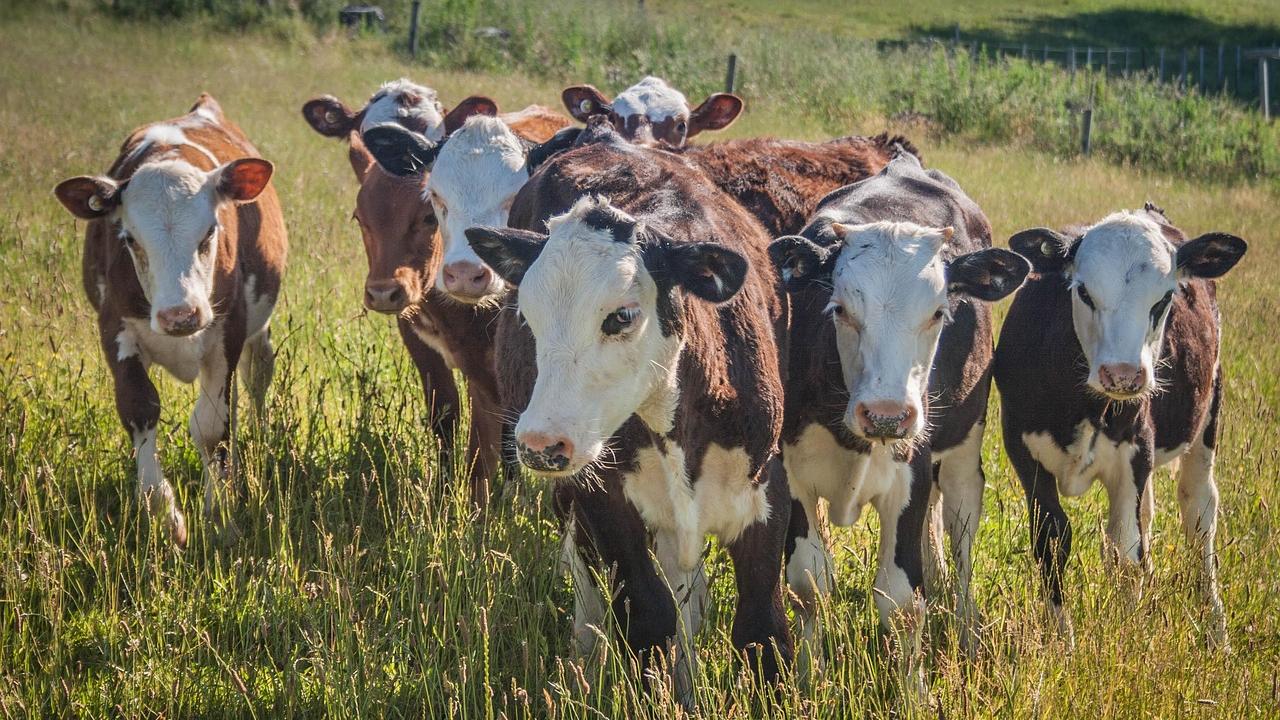
New World Screwworm Myiasis
What is New World screwworm myiasis?
Takeaways
- New World Screwworm myiasis is a serious condition caused by the larvae of the New World screwworm fly that can be fatal if untreated.
- The larvae feed on the living tissue of warm-blooded animals, causing large, painful wounds that do not heal and can develop infections.
- Affected animals are quarantined and treated. The prognosis for treated animals is generally good.
- This is a reportable disease in the U.S. If you observe suspicious wounds or maggots, contact your veterinarian, state animal health official, or USDA veterinarian immediately.
New World screwworm myiasis is a serious condition caused by the larvae (maggots) of the New World screwworm fly (Cochliomyia hominivorax). These larvae feed on the living tissue of warm-blooded animals—including livestock, wildlife, pets, and occasionally humans.
Adult NWS flies, which are slightly larger than the common housefly, with orange eyes, a blue/green metallic colored body, and three dark stripes on their backs, lay eggs in wounds or body openings (such as the nostrils, eyes, mouth, umbilicus, or genitals). The larvae hatch in 12–24 hours and use sharp mouth hooks to burrow into the surrounding tissue, causing extensive tissue destruction. They feed for about a week, drop to the ground, and pupate in the soil to emerge as adult flies.
Although eradicated from the Unites States in 1966, the NWS fly is still endemic in South America and parts of the Caribbean. Recent outbreaks near the U.S. – Mexico border raise concerns over potential northward spread due to warming temperatures and import/export of animals across borders.
What are the clinical signs of New World screwworm myiasis?
Clinical signs of New World Screwworm infestations include enlarging, draining wounds that do not heal, get larger and deeper and have a foul smell, the presence of maggots or egg masses in wounds, irritated behavior by the animal, and head shaking. These infestations are very painful, so affected animals often become depressed, stop eating (and consequently lose weight), and may separate themselves from herd mates. Dairy animals may exhibit decreased milk production. Infested wounds can develop secondary infections.
How is New World screwworm myiasis diagnosed?
New World screwworm is primarily diagnosed by visual identification of the NWS larvae found in wounds. The larvae exhibit a characteristic tapered body shape and possess spines that project backward. The eggs are white and usually deposited around wound edges, which can help differentiate them from other species. Larvae may be sent to a specialist for microscopic analysis and definitive identification. Relevant clinical signs can also aid in diagnosis.
This is a reportable foreign disease in the U.S. If you observe suspicious wounds or maggots, contact your local veterinarian, state animal health official, or USDA veterinarian immediately. Place samples of eggs, larvae, or flies in 70% alcohol for submission to the diagnostic laboratory.
How is New World screwworm myiasis treated?
Affected animals are quarantined. Treatment involves wound care, surgical removal of maggots, and application of larvicides and insecticides. Antibiotics may be administered if the wound becomes infected. Regulatory agencies may utilize additional control measures, such as environmental insecticidal treatment or sterile fly release.
What is the prognosis for New World screwworm myiasis?
Treated properly, the prognosis for infested animals is generally good, barring any complications. For livestock infested with NWS, the prognosis is poor if left untreated. Without intervention, NWS infestation can be fatal within a week.
How can New World screwworm myiasis be prevented?
Best practices for NWS prevention include regularly inspecting wounds, using insect repellants, and ensuring good hygiene and clean environments. General fly control measures such as baits, traps, regular removal of manure buildup, fans at the entrance to barns and stalls, and utilizing insecticide ear tags in livestock are also good practices.
Outbreaks that move northward and threaten to affect U.S. livestock populations result in temporary bans imposed by the USDA on imports of cattle, bison, and horses from Mexico.
To control spread, sterile NWS male flies are reared in sterile fly facilities and released into the wild to mate with females, which results in non-viable eggs, stopping further reproduction and causing the NWS fly population to die out.
Cold temperatures limit the distribution of NWS flies and warmer seasons coincide with increased reports. Increases in average temperatures could lead to potential expansion of the geographic range of NWS flies, especially in regions with high livestock densities. Early detection and control of infestations in North America are essential to NWS management.
For more information
CDFA “New World Screwworm”
USDA “Economic Impact of New World Screwworm”
USDA-APHIS list of potential pesticides against New World screwworm
“Parasitic fly eradicated in 60s is back and threatening livestock”, KCBS Radio interview with Dr. Grace VanHoy, August 17, 2025
